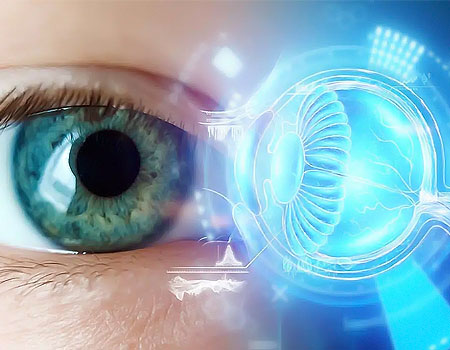 Eye diseases can affect various structures of the eye, including the cornea, retina, optic nerve, and lens. Treatment for eye diseases depends on the specific condition and its underlying cause. Here are some common eye diseases and their treatments:
Eye diseases can affect various structures of the eye, including the cornea, retina, optic nerve, and lens. Treatment for eye diseases depends on the specific condition and its underlying cause. Here are some common eye diseases and their treatments:
1. Refractive Errors (such as nearsightedness, farsightedness, and astigmatism):
- Eyeglasses: Prescription eyeglasses can correct refractive errors and improve vision.
- Contact Lenses: Contact lenses provide an alternative to eyeglasses for correcting refractive errors.
- Refractive Surgery: Procedures such as LASIK or PRK can reshape the cornea to correct refractive errors permanently.
2. Cataracts:
- Surgery: Cataract surgery involves removing the cloudy lens and replacing it with an artificial lens (intraocular lens implant).
3. Glaucoma:
- Eye Drops: Prescription eye drops are often used to lower intraocular pressure and prevent further damage to the optic nerve.
- Oral Medications: In some cases, oral medications may be prescribed to lower intraocular pressure.
- Laser Therapy: Procedures such as laser trabeculoplasty or laser iridotomy may be performed to improve drainage of aqueous humor and lower intraocular pressure.
- Surgery: Trabeculectomy, minimally invasive glaucoma surgery (MIGS), or other surgical procedures may be necessary if medications and laser therapy are ineffective in controlling intraocular pressure.
4. Age-Related Macular Degeneration (AMD):
- Anti-VEGF Injections: Intravitreal injections of anti-vascular endothelial growth factor (VEGF) medications are commonly used to slow the progression of wet AMD by reducing abnormal blood vessel growth and leakage.
- Photodynamic Therapy (PDT): PDT involves injecting a light-sensitive drug into the bloodstream and then activating it with laser light to destroy abnormal blood vessels in the retina.
- Laser Therapy: Laser photocoagulation may be used to seal leaking blood vessels in the retina or to destroy abnormal blood vessel growth in certain cases of AMD.
5. Diabetic Retinopathy:
- Control of Blood Sugar Levels: Tight control of blood sugar levels is essential to prevent or slow the progression of diabetic retinopathy.
- Anti-VEGF Injections: Similar to AMD treatment, anti-VEGF injections may be used to treat diabetic macular edema and proliferative diabetic retinopathy.
- Laser Therapy: Laser photocoagulation may be used to seal leaking blood vessels or to destroy abnormal blood vessel growth in the retina.
6. Retinal Detachment:
- Surgery: Retinal detachment typically requires surgical repair to reattach the retina to the back of the eye. Procedures may include scleral buckling, pneumatic retinopexy, or vitrectomy.
7. Conjunctivitis (Pink Eye):
- Antibiotic Eye Drops or Ointments: If the conjunctivitis is bacterial, antibiotic eye drops or ointments may be prescribed.
- Antihistamines or Mast Cell Stabilizers: For allergic conjunctivitis, medications such as antihistamine eye drops or mast cell stabilizers may help reduce inflammation and relieve symptoms.
- Artificial Tears: Lubricating eye drops can help soothe irritation and relieve dryness associated with conjunctivitis.
It's important to consult with an eye care professional (ophthalmologist or optometrist) for an accurate diagnosis and appropriate treatment plan if you experience any eye-related symptoms or have been diagnosed with an eye disease. Early detection and treatment can help prevent vision loss and preserve eye health.

 Eye diseases can affect various structures of the eye, including the cornea, retina, optic nerve, and lens. Treatment for eye diseases depends on the specific condition and its underlying cause. Here are some common eye diseases and their treatments:
Eye diseases can affect various structures of the eye, including the cornea, retina, optic nerve, and lens. Treatment for eye diseases depends on the specific condition and its underlying cause. Here are some common eye diseases and their treatments: